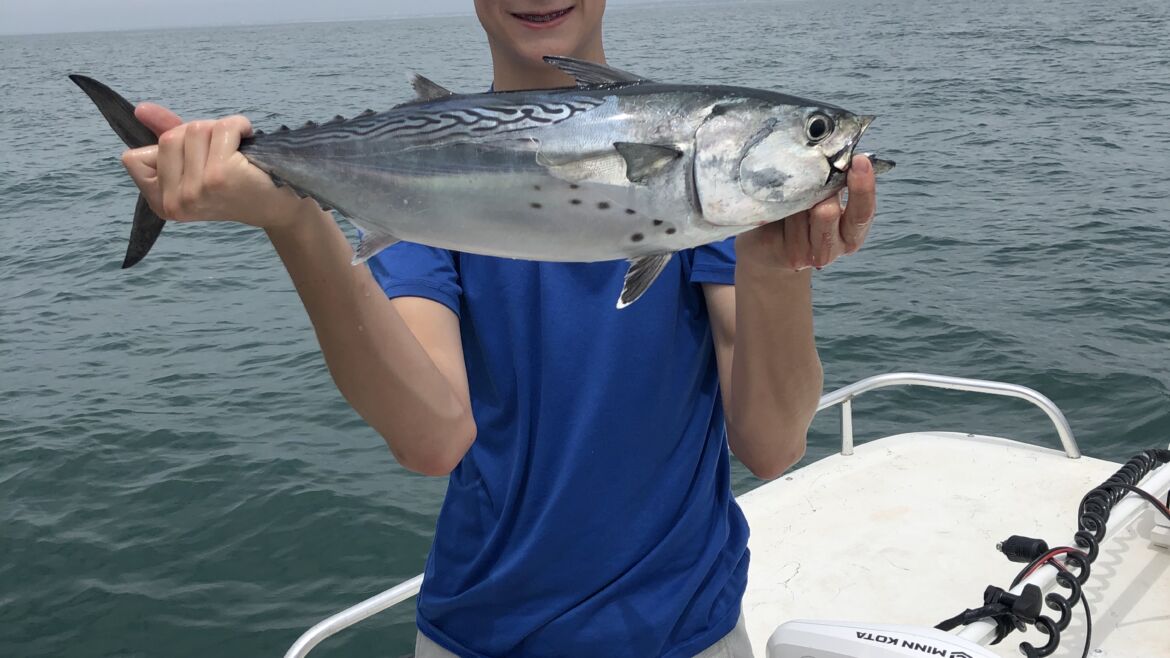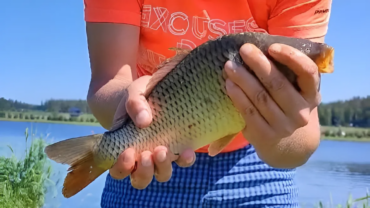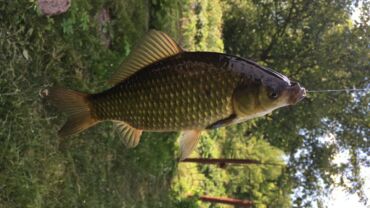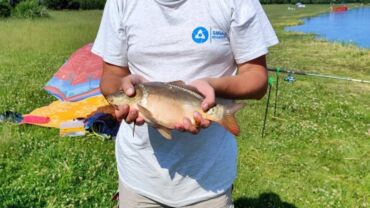Surf fishing is among the most popular means of fishing across the United States, especially in the saltwater community. This being said, I wanted to write an article that can hopefully give you guys some helpful advice and tips on how to make your surf fishing experience both more fun and productive. Surf fishing is an awesome facet of fishing just because of its remarkable accessibility. You don’t have to have a crazy nice boat or super expensive offshore rods; rather, you just need a few trusty surf rods, the right bait and a good attitude and you can land fish in no time. In this article, I’m going to break surf fishing down into a few main categories to make it easier to understand and read.
Now obviously, this article can be a great resource if used correctly, but the Fishbox app can also give you that little extra edge to help you become an even better angler. Taking data from around 50 different metrics, the Fishbox app provides anglers with unparalleled access to the fishing forecast with things like bite times and peak windows. Take advantage of this extra resource and download the Fishbox app today.
Get your personalized fishing map
Answer a quick quiz and get your own personalized fishing map
Now, sit back, relax, and get ready to learn about surf fishing. Enjoy!
Types of bait
Bait is probably the most important factor in the success of your day on the water when it comes to surf fishing. Your bait, if you put the effort in, has the potential to set you apart from any other angler on the beach and offer a much higher probability of success for the day. Picking and choosing as well as finding the right bait or lure for that matter can spell the difference between a good angler and a great angler. Let’s jump right in and break down some of the most popular surf fishing baits that anglers across the country use.
Live Bait
When doing most other kinds of saltwater fishing, I would almost never hesitate to say that live bait is going to be your best bet, but with surf fishing, things change a bit because you have to heave your bait very far out. This being said, softer live baits like shrimp, finger mullet, pogies and more tend to either fly off the hook during the cast or die on impact when they hit the water. As a result, when I’m surf fishing, I tend to stay away from live bait unless I know it will stay alive even after it hits the water. I’m going to list a few baits that could potentially survive the impact and give you a better chance of landing something bigger. After all, live bait generally tends to produce fewer bites but bigger fish.
- Mullet: These can work if big enough although sometimes the small ones can survive a cast. They work well for redfish and flounder as well as any other larger predatory fish.
- Croakers/Whiting: These are great for sharks but sometimes a daring redfish or bluefish will take a stab at these baits.
- Crabs: This one is pretty controversial as a crab will often not survive the impact with the water and break apart. If you can manage to keep one alive, then it is an exceptional bait, especially for large redfish.
- Sand Fleas: These guys are pretty easy to keep alive on impact due to their small size and make excellent bait for permit and other species.
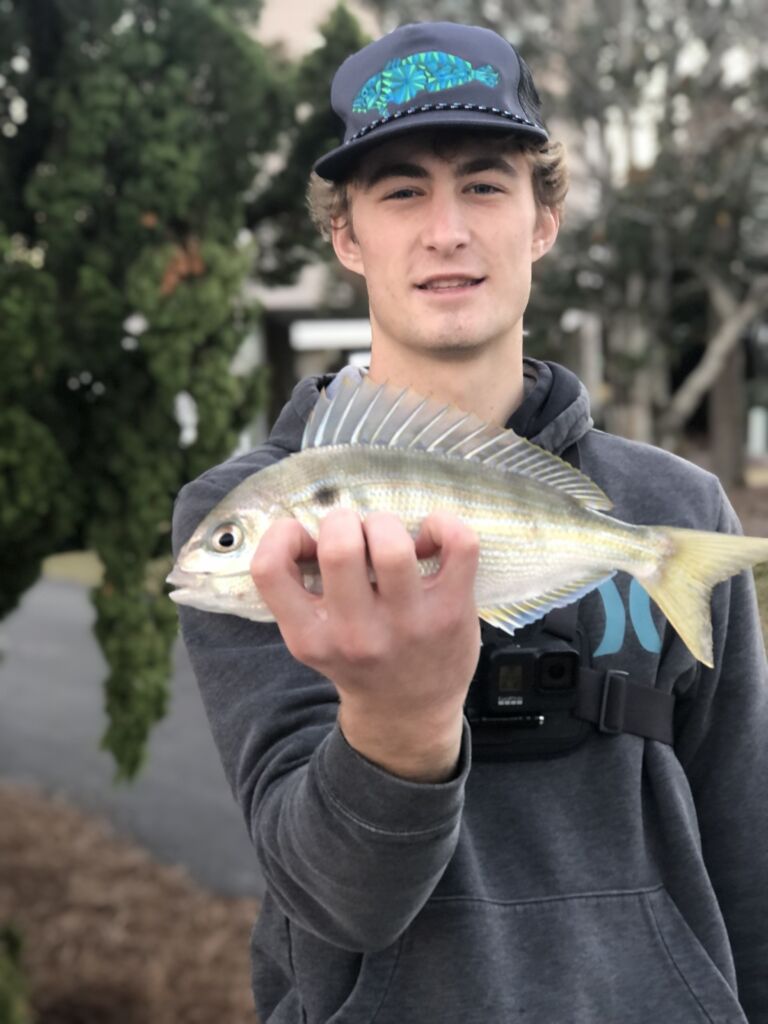
Read also: How and Where to Catch Live Bait in Saltwater
Dead Bait
Dead bait is what I generally stick to when surf fishing simply because more species are likely and able to pick up dead bait, especially if it’s a bait that gets a bit a lot like shrimp or squid. Additionally, dead bait just tends to stay on the hook better and you never have to worry about the bait dying on impact with the water and losing presentation because it is already dead.
- Squid: One of my favorite surf fishing baits. Because almost everything in the ocean will bite it, it will quickly reveal if there are hungry fish in the area. If you can make it past the pinfish and croakers, plenty of other larger species like flounder and redfish would be more than happy to eat it. So, the only downside is the amount of little fish that will pick at it.
- Shrimp: Shrimp also fish very similarly to squid and actually tend to attract larger fish like redfish and trout. For whatever reason, likely because shrimp is the natural prey of many species (unlike squid), the bigger fish just like it better than squid. Now I know you’re asking, “Pierce, why would you go to bait not be shrimp then?” The reason is fairly simple. I like having the confidence that my bait is going to stay on the hook no matter how hard or soft that cast is. I’m often trying to sling my baits and shrimp tends to fall off more. In any other scenario, I’m picking shrimp all day long.
- Cut Bait: This is another great bait due to its versatility and ability to stay put on the hook. Additionally, cut bait can look like many things. You can use mullet, pogy, whiting, croaker and so much more—the options are endless. Cut bait tends to bring in redfish and bluefish in the surf. Just be wary of the bluefish though. They can make your life miserable if they either keep cutting through your line or biting around your hook. Also, one more quick note: I prefer using the middle chunks of the bait. I generally tend to stay away from the head or tail but that is entirely my preference.
- Clam: Fishes identical to squid just give off a different smell and flavor in the water. Play around with it and figure out what the fish want and then make your decision on the bait you’re going to stay with.
- Crab: The best surf fishing bait for big black and red drums. Use half of a blue crab on the bottom for best results.
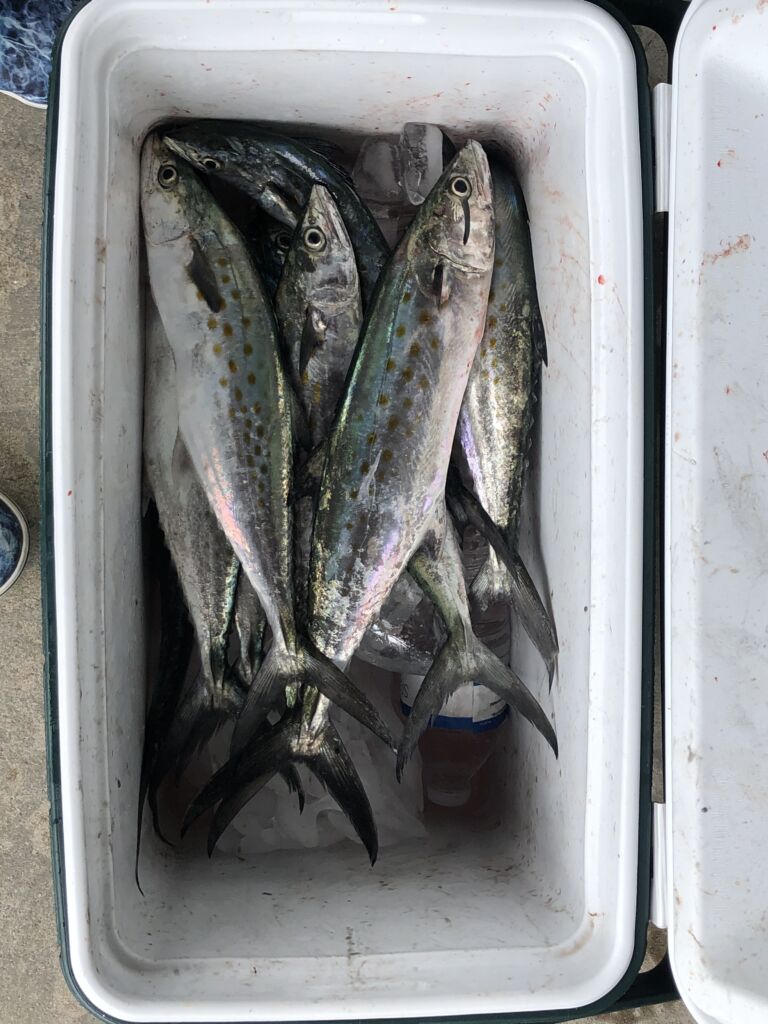
Artificial Bait
While I personally don’t prefer artificials in the surf under most circumstances, there are a lot of anglers who will swear by using artificials. From my own experience, I have seen that natural baits almost always perform better unless fish are busting on the top of the water or there is a feeding frenzy. At that point in time, you have no time and an artificial that mimics a baitfish in any capacity will likely do the job.
- Gotcha Plugs/Casting Spoons/Other Hard Baits: These baits often give a lot more casting distance and durability than their soft plastic counterparts. For example, if there is a school of Spanish mackerel or bluefish going nuts, the last thing you want to do is to have to put a new paddle tail on every time you reel in because it keeps getting bit in half. Additionally, under the conditions of a frenzy, the fish are just going for something shiny or something that makes noise.
- Soft Plastics: These are a little bit different from the hard baits as soft plastics often offer better action but shorter casting distance. If you’re working the beach and breakers for species like flounder, then soft plastic is the way to go. Now obviously, there are other applications, but in general, most people prefer the durability of hard bait over the action of soft plastic due to the nature of feeding frenzies on the beach.
- Fishbites: You essentially fish these like a strip of dead bait and just let it sit. I was tempted to put this in the dead bait category for this reason. Scented and flavored like the natural bait it mimics, Fishbites can be an effective strategy, but nonetheless, a strategy I would only use if I didn’t have dead or live bait.
As you can see, there are a ton of different routes you can go with for bait. Picking a few and varying your spread is the most beneficial way to see what the fish want to eat. Have you been trying a bait or lure for an hour with little to no action? If you have the ability to try a different bait, definitely give it a go and see how the fish respond. Bait is a game of adaptation.
Choice of tactics
- Rigs: Since fishing artificials don’t often require a rig other than maybe some sort of leader, I’m going to spend my time discussing rigs for dead or live bait. There are two main rigs that most surf fishermen find themselves using. First, the classic top and bottom rig. You can look up an image of this online, but the top and bottom rig consists of a weight on the bottom of the rig with two hooks staggered above it. Personally, I find that this rig is best for producing numbers with smaller species like whiting, croaker, and pinfish, but I have also seen it catch larger species as well. When I fish this rig, I generally fish the bigger bait or live bait on the bottom and a smaller bait up top with something like squid or shrimp. Second, the fish finder rig (it is essentially a modified Carolina rig). You slide a weight (most often a pyramid or sputnik weight between 2 and 4 ounces depending on conditions) onto your main line which is then connected to a swivel which is connected to the leader with a hook. Again, you can find images of this online. I personally like this rig better as it is simpler and allows for better presentation of bait — especially live bait because it allows the bait to swim freely. These are a couple of the most popular surf fishing rigs that you might think about implementing in your own endeavors.
- Gear: This section of the article is where people tend to differ a lot because most of the time gear is just a preference. Some people are going to prefer the long ten-foot rods and others, like me, only like the 7-to-8-foot rods. To be honest, it doesn’t really matter that much. Pick a rod and reel that you are confident in. One with enough backbone to make a strong cast but not so much so that you can’t see a bite. Additionally, the type of line and size of it is up to you. For me, I feel safer with more lines being on my reel, so I choose braids. Braid gives me the strength and capacity I need for my tactics. Now I know some of you are going to prefer mono—that is perfectly fine. The one piece of advice I would give is that you must remember your power when casting. If you cast hard, you’re gonna want some heavier lines. If not, you can lighten up a bit. That is about all I have for gear other than some optional things that can make life easier for you. Other things like rod holders, cast nets, and even a simple beach chair can make the whole process a lot more enjoyable. If you take anything away from this section, take away this: Gear is totally up to you and your preference, but you must know what you and the gear are capable of doing.
- Spreads/Depth: For the most part, I just try and cast out my baits as far as possible past the breakers. Now obviously, if that cast is going to land on top of a sandbar, then adjust accordingly, but I like knowing my bait is in deeper water where bigger fish can lie in wait. For my spread, I’m almost always using the same rigs on every rod, but that honestly doesn’t matter that much. Where you want to vary your spread is in the bait you use. Testing a variety of baits and seeing what the fish are the most receptive to is extremely important. For example, if you have the luxury of multiple rods, put a live mullet on one, cut bait on another, and shrimp on another. Just remember, if the fish aren’t biting it and it has been a bit, then don’t be afraid to change your bait. Putting all your eggs in one basket is never a good idea unless the fish are hammering that bait. Keep that in mind the next time you are out surf fishing.
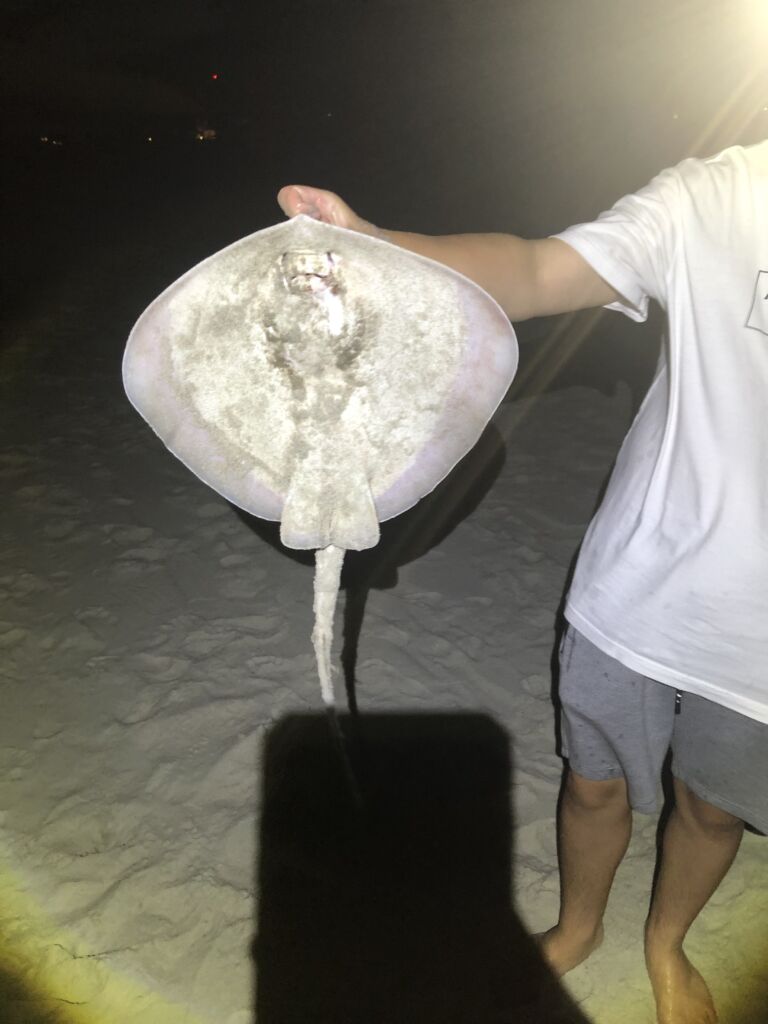
Location/Conditions/Time of Year
- Time of Year: Surf fishing can be a year-round thing, but just like most other areas of saltwater fishing, there will be periods of down time. From my own personal experience and a bit of research, winter is really the one time of the year when you are likely going to struggle if you’re trying to surf fish. Water temperatures, especially where I am in North Carolina, plummet forcing fish into deeper water and off the beaches. Additionally, any sort of live bait is extremely hard to find, making fishing even more difficult. However, Spring through Fall is just as good a time as any. If I were going to pick one time of year I had to surf fish, I would 100% go with the Fall. Big bluefish and Spanish mackerel are everywhere, and the mullet run takes place during this time as well bringing in tons of redfish, jacks, snook, tarpon and much more. In the fall, water temperatures are still pretty warm from the Summer and thus finding live bait is very easy. All in all, for most of the year, you should be pretty good assuming the conditions are right and you are being smart in how you approach surf fishing as a whole.
- Structure/Location: Now I’m not gonna lie, for years I never paid any attention to the location of where I cast my baits or the structure of the beach where I was fishing. Instead, I just slung that bait out as far as possible and that was it. However, after learning from other anglers, new experiences, and research I’ve done online, it turns out that where you put your bait can make a huge difference in whether or not you have a good day of fishing. Let’s talk about how to read the water a little bit. Wherever you see the waves breaking, there is a sand bar or shallower part of the beach—this is where you don’t want your bait to be. Oftentimes there will be two or three sandbars that are staggered out. In between those bars is where you’ll find the deeper troughs where bait and large predators are. You want to cast your bait in between these bars and into these troughs where waves aren’t breaking. So yes, you can still cast your bait far if you want, but it helps to place your bait where the fish are and that occurs far more frequently when you target the troughs.
- Weather: This plays an absolute monster role in the success of your day. First off, surf fishing while it is rough is never going to be a great option. Tons of waves and currents prevent your weight from staying in place and thus your rig is dragging all over the place making it hard for fish to find your bait. Second, I’ve never really seen a difference when it comes to sunny versus cloudy or rainy with regards to the bite. Instead of listening to me, I’d rather point you to the Fishbox which gives you those metrics personalized to the location you are fishing. Wind can also be challenging but it is not an end all be all especially if the waves are relatively small and calm. So, in summary, just be careful with the weather and play it by ear. Experience will also help you craft your preferences and strategies so don’t be afraid to get out and get uncomfortable in order to find those fish.
- Tides: Tides are super important for surf fishing and might be the second biggest factor other than bait. The rule of thumb is that you always want to fish a tide when the water is moving. You never want to intentionally plan your fishing around a slack tide. Now obviously, if you are fishing for a long time, there is a chance you run into a slack tide. If this is the case, it doesn’t mean you have to immediately pack your bags and go home; fish can still bite. However, for the majority of the time, the bite will be much better when the water is moving and there is current to keep the bait going up and down the beach. I personally prefer the incoming tide when the water is rising as I believe more bait is pushed into the beach.
Get your personalized fishing map
Answer a quick quiz and get your own personalized fishing map
Conclusion
I hope you guys have enjoyed this article half as much as I did writing it. When I tell you it truly is a joy to write about this stuff to you guys, I mean it. I can’t believe I have been blessed enough by the Lord to be in a position to make a little money writing about what I truly love. It makes my day every day to know that you guys care enough to read what I have to write. I’m thankful to all of you readers and hope to be writing for years to come. I enjoy sharing all my experiences with you and the knowledge I’ve gleaned from over a decade of fishing. I hope this article helped you guys learn a bit more about the ins and outs of surf fishing. As always, good luck and tight lines!
Photo Source: All photos in this article were provided by expert Pierce Latta.
Visit his Instagram profile.
Subscribe to his YouTube channel.
